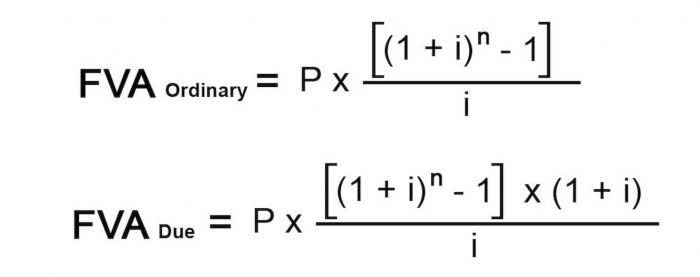How to Reconcile in QuickBooks or Navigating Account Reconciliations in QuickBooks
(If you’re in the middle of reconciling, stay on the page you’re on and skip to step 4). For those new to QuickBooks or reconciliation, the process might seem daunting at first. However, with consistent practice and attention to detail, it becomes a manageable and integral part of your financial routine.
- When you’ve entered all the information from your bank statement, click the green Start reconciling button to continue.
- Schedule reports to be generated and emailed daily, weekly, or monthly.
- You also need to ensure that the opening account balance shown in QuickBooks is correct.
- It ensures that QuickBooks entries align with those in your bank and credit card account statements.
- If your sidebar menu is not what is shown in our tutorial, it means that you are on Business View.
When you’ve entered all the information from your bank statement, click the green Start reconciling button to continue. Reconciliation is an essential accounting process that ensures two different financial records are correctly matched up. This is especially important to ensure that your accounts are all in order. Businesses should reconcile their bank accounts within a few days of each month end, but many don’t. Learn from these 10 common accounting mistakes to make improvements in your business. You’ll want to look at your statement, starting with the first transaction listed and find that same transaction in the Reconciliation window in QuickBooks.
Reconcile an Account in QuickBooks Online: Overview
The beginning balance in the summary at the top of the QuickBooks reconciliation screen must equal the beginning balance on your bank statement. If you reconciled the account successfully in the prior month, yet your beginning balance doesn’t match your bank statement, then a previously cleared transaction has changed. QuickBooks will provide a link on the screen where you input the statement summary to help you find the changed transaction. Alternatively, to view an account reconciliation report later, click the “Settings” button. Then click the “Reconcile” link under the “Tools” heading in the drop-down menu to open the initial “Reconcile” page again. Then click the “History by account” link in the upper-right corner of that window to open a “History by account” page.
Here’s an up-to-date list of alternatives for the Alliant Credit Union Business Account. This review will detail the features, pricing, plans, and even how to do payroll in QuickBooks. We’ll dive in to free options and low-cost options and their features, just in case you’re not satisfied. QuickBooks Online and Wise Business can be connected and automatically synced.
Linking your bank and credit card accounts to online banking allows for the automatic downloading of transactions and entry of the opening balance into QuickBooks Online. Reconciliation is an accounting process used to ensure that two sets of records (usually the balances of two accounts) are in agreement. It is a key step in establishing the accuracy of financial records and is often used to compare the truckers bookkeeping service records of a company with external records such as bank statements. Connect QuickBooks to your bank, credit cards, PayPal, Square, and more1 and we’ll import your transactions for you. When you receive your bank statement or account statement at the end of the month, you’ll only spend a minute or two reconciling your accounts. QuickBooks organizes your data for you, making bank reconciliation easy.
Basics of reconciliation
You can then select Start reconciling to begin the reconciliation of each transaction in that account. Finally, you need to make sure all transactions are matched to already-entered transactions, or categorized and added if there is no such transaction entered already. QuickBooks will attempt to match downloaded transactions to previously-entered transactions to avoid duplication. I’d be happy to help you unreconcile past bank reconciliation so they don’t throw off your records. In order to reconcile on Quickbooks, you’ll first need to have your financial statements on hand. Reviewing documentation consists of checking the amounts shown on invoices or receipts, compared with the corresponding amounts shown leaving or entering the account in question.
Small Business
This website is using a security service to protect itself from online attacks. The action you just performed triggered the security solution. There are several actions that could trigger this block including submitting a certain word or phrase, a SQL command or malformed data. If you forgot to enter an opening balance in QuickBooks in the past, don’t worry.
QuickBooks Issues and Problems Ecommerce Businesses Can Handle with Accounting Integration Software
It will teach you how to review, classify, and accept or exclude transactions that are imported automatically from your connected credit card accounts. If this is the first time you’re reconciling this account, the beginning balance in QuickBooks will be zero. Make sure you’re using the very first bank statement for that account. You may have to go back many months and then move forward, reconciling one month at a time. If it’s impossible to start your reconciliation in the first month of the bank account, you might need an experienced bookkeeper to help with your first reconciliation to get you on track.
I’m here to help you fix the beginning balance so you can reconcile the transactions. Your clients can also edit individual transactions on a reconciliation whenever they need to. This is only available for accountants who use QuickBooks Online Accountant. Then click the “Close without saving” button in this window to confirm. Alternatively, to return to the reconciliation, click the “Go back” button in the prompt window. PayPal has a payment processing and foreign currency conversion fees.
For the selected account, enter the account’s statement information into the “Add the following information” section. Enter the statement’s ending balance into the “Ending balance” field. Then enter the statement’s ending date into the “Ending date” field. Over a short timeframe such as a month, differences between the two balances can exist (due to bank errors or checks that have not been cashed by the payee, for example).
Top 15 Small Business Accounts Payable Software
In cases involving significant or complex issues, it is recommended to seek the assistance of an accounting professional. To begin your reconciliation, click the button Reconcile in the Banking menu of QuickBooks Desktop. If you want to reconcile in QuickBooks Desktop, this guide provides a detailed, step-by-step approach to help you through this process.












